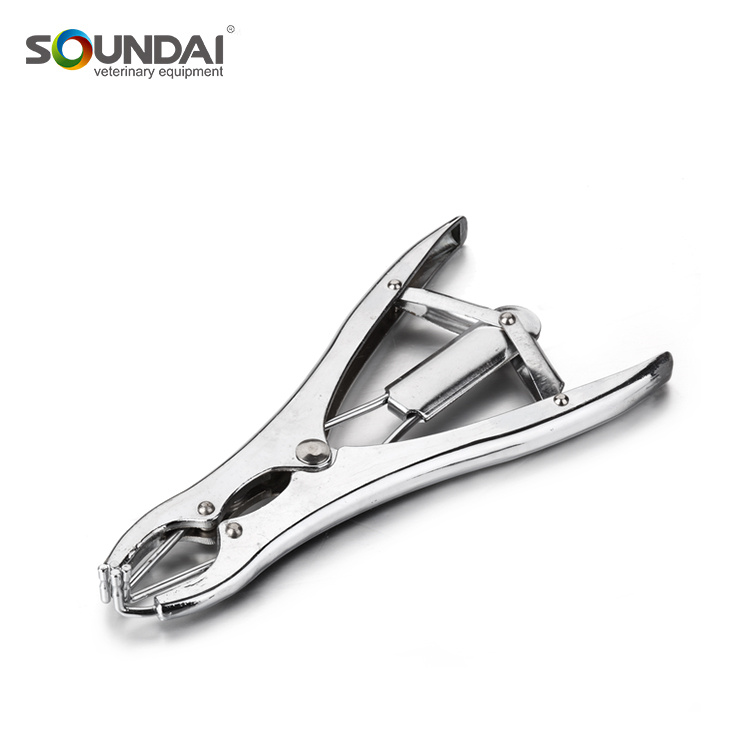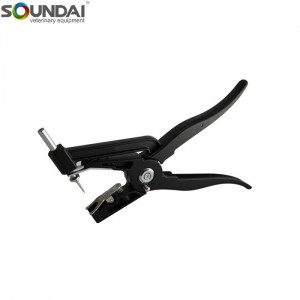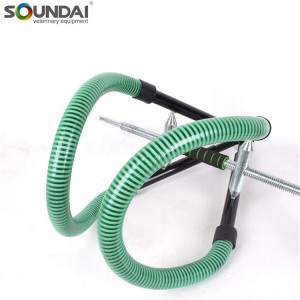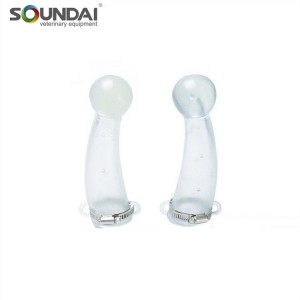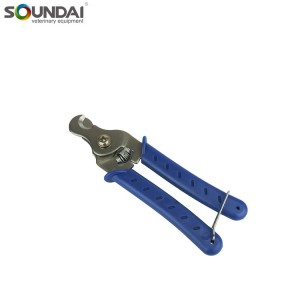Description
Once the rubber ring is in place, take a firm grip on the handle of the pliers. The lever mechanism of the pliers easily opens the metal rod, stretching the rubber ring into a square shape. Next, carefully grasp the scrotum of the animal that needs to be castrated. Gently squeezing the two testicles at the base of the scrotum helps to expose the base of the animal's penis. Thread the stretched rubber ring through the scrotum, making sure it reaches the base of the scrotum. The elasticity of the rubber ring can fit tightly and firmly at the base of the animal's penis. Once the rubber ring is properly positioned, make sure it is firmly seated. This is done by moving a protrusion on a lever mechanism located in the middle of the pliers. As the protrusion moves, the metal support feet move vertically toward the pliers, detaching from the rubber ring.
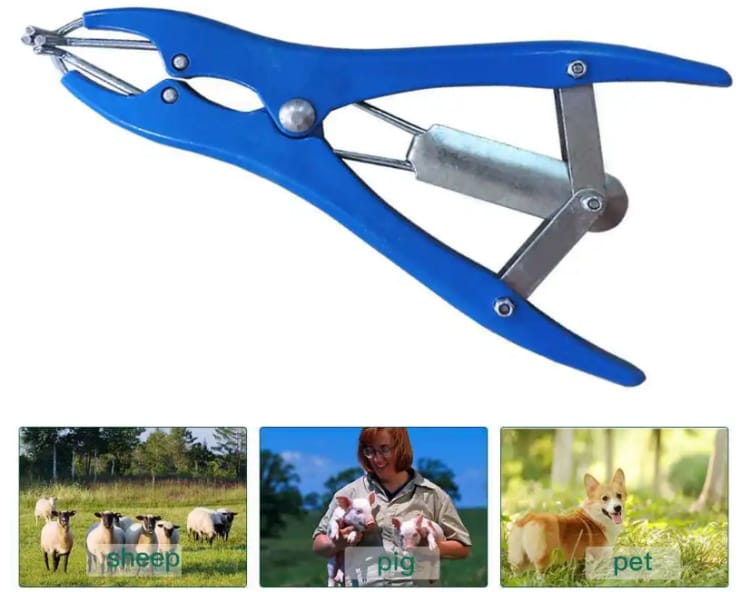
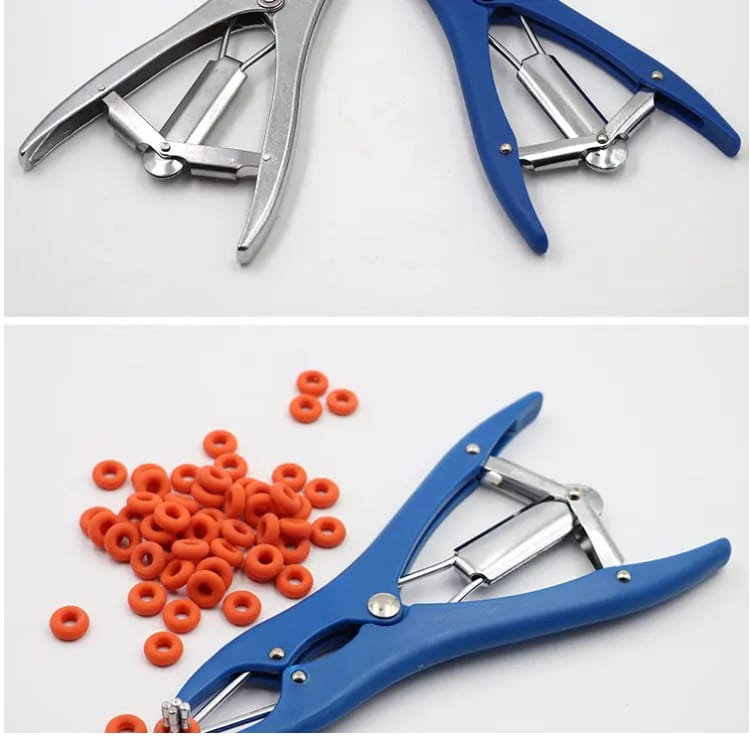
This causes the rubber ring to quickly shrink back to its original size, gripping firmly at the base of the animal's penis. If necessary, the process can be repeated on the other side of the animal's body by adding another rubber ring near the animal's body. This helps to increase the effectiveness of the castration process and provides symmetrical results. Following castration surgery, it is important to monitor the animal's healing process. Over the course of about 7-15 days, the scrotum and testicles will gradually die, dry out, and eventually fall off on their own. Providing appropriate postoperative care is critical, including monitoring for signs of infection, ensuring proper hygiene, and providing appropriate pain management as needed.
Package: Each piece with one poly bag,100 pieces with export carton.

